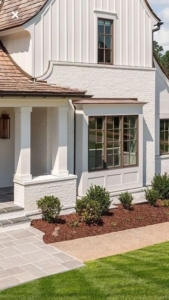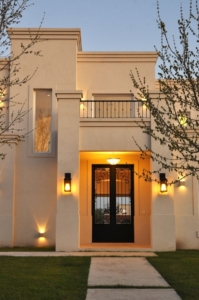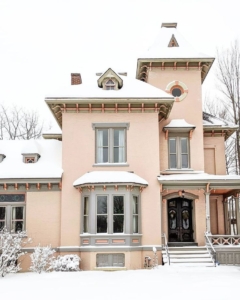The Role of Lighting in Enhancing Your Stucco Color Choice
When it comes to enhancing the aesthetic appeal of your home, the color of your stucco plays a pivotal role. However, there’s a subtle and often overlooked factor that can significantly influence the way stucco colors appear—the magic of lighting. The interplay between stucco shades and lighting can transform your home’s exterior, creating a captivating and dynamic visual experience.
Natural Light: The Master of All
First and foremost, consider the natural light that bathes your home throughout the day. The angle, intensity, and color temperature of sunlight can alter the perception of stucco colors. For example, warm morning sunlight may accentuate earthy tones, while cooler evening light might bring out the richness in deeper hues.
If your home is exposed to direct sunlight, vibrant colors such as terracotta or Mediterranean blues can radiate warmth and energy. On the other hand, muted tones like soft grays or pale yellows may be the perfect choice for homes in shaded areas, as they won’t be overwhelmed by the sun’s intensity.
Artificial Lighting: Setting the Mood
As the sun sets, the role of artificial lighting takes center stage. Well-placed outdoor lighting can create a stunning ambiance and enhance the visibility of your stucco color choice during the evening hours. Consider using uplighting to accentuate architectural details or downlighting for a more subtle and sophisticated look.
Experiment with different light fixtures and their color temperatures. Warm white lights can complement warmer stucco tones, while cooler white lights work well with cooler stucco colors. Additionally, the placement of lights can create intriguing shadows, adding depth and dimension to your home’s facade.
Seasonal Changes: Adapting to Nature’s Palette
The changing seasons bring variations in natural light, influencing the way stucco colors are perceived. For instance, during the vibrant hues of autumn, earthy stucco tones may harmonize beautifully with the surrounding landscape. In winter, when daylight is softer, cooler stucco colors can create a serene and elegant atmosphere.
Consider the foliage around your home when selecting stucco colors. A color that blends seamlessly with the natural surroundings can create a cohesive and visually pleasing exterior.
Color Testing: A Crucial Step
Before finalizing your stucco color choice, conduct thorough color testing under different lighting conditions. Paint small sections of your exterior and observe how they appear in morning sunlight, afternoon shade, and under artificial lighting in the evening. This hands-on approach allows you to witness the dynamic nature of stucco colors and make an informed decision.




 Builder Boy, LLC
Builder Boy, LLC